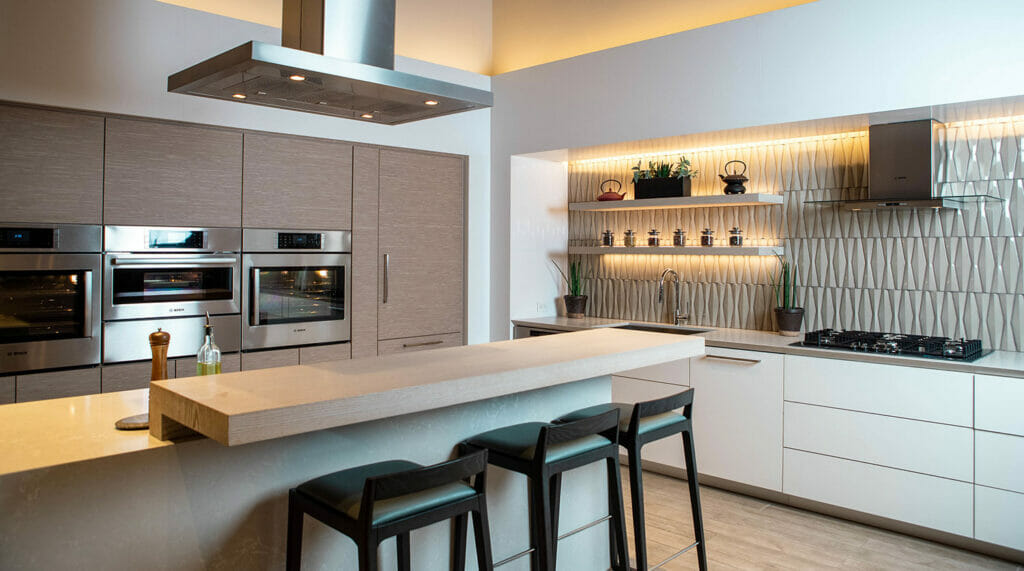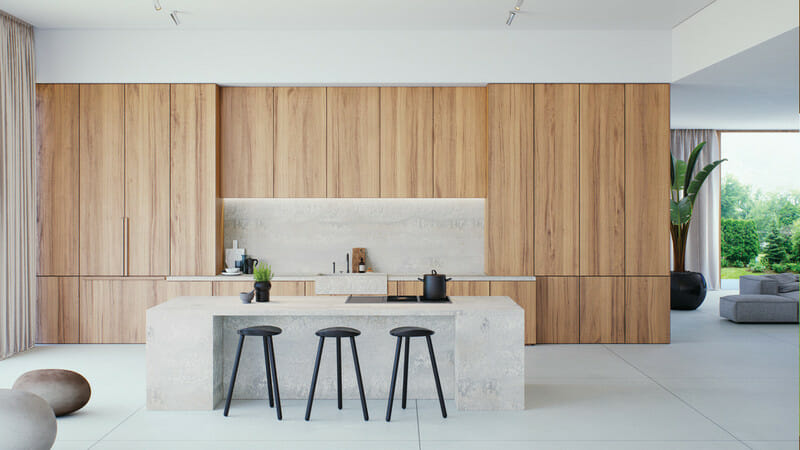How to Measure Countertops for Replacement
5 min read
Are you considering replacing your countertops? Accurately measuring the existing countertop seems simple but should be done with care and caution. With the total square footage, you can get an accurate cost estimate from various retailers.
There are two options once you’re ready to order. Purchase uncut quartz slabs from a retailer and have them cut to the desired length on site. This is not a popular method as quartz requires specialized fabrication. Alternatively, you can work with a fabricator to have the slabs pre-cut and ready for installation. In both cases, knowing the exact measurements can save you on costs associated with excess material or needing to order additional slabs.
Let’s talk about how to measure countertops for replacement.

Steps to Measure an Existing Countertop
Here are the required tools and supplies you need to measure countertops accurately:
You can choose to measure the countertops by yourself or have another person help you— which we recommend as it can help ensure that the measurements are more accurate.
Here is how to measure the kitchen countertop:
Step 1: Draw a rough drawing of the countertop
Start by sketching out a rough diagram of the existing countertop and island if applicable.
Highlight the placement of the sink and appliances. If you need to install quartz for the backsplash, plot the shape on the same paper as well.
Step 2: Breakdown the countertop into sections
Experts tell customers to take measurements in terms of rectangular sections to prevent overlaps. For a rounded or oval island, treat it as a square. This is where a rough initial sketch will help in estimating the total area.
When conducting measurements, remember that the original size of a quartz slab is roughly 120 inches in length and 60 inches in width. A jumbo slab may be slightly longer at 131.5 inches at 64.5 inches wide.
Step 3: Measure the countertop
Next, take measurements of the countertop. You can start with the length. The standard width of kitchen countertops ranges from 24.5 to 25.5 inches but confirm the exact width of your particular surface.
Also note if the countertop has an overhang. If not, you may choose to extend the overhang when installing the new slabs. To add an overhang, you may need to add an extra 1 to 1 ½ inch to the width.
Step 4: Multiply the length and the width
If you have a simple rectangular countertop with a length of 50 inches and a width of 25 inches, multiplying these two together gives you an area of 1250 square inches.
When figuring out how to measure countertops, particularly for complex shapes such as an L-shape, split it into two rectangles and calculate the area of each section.
Step 5: Add up all the rectangles and squares
Next, you have to add up all the separate sections to get the total area in square inches. Suppliers often quote the price in square feet. There are various ways to convert the area. Divide the area in square inches by 144 to get the area in square feet. For instance, 1250sq inches divided by 144 = 8.68 sqft. Alternatively, plug the figures into a free online square footage calculator or convertor to do the same.

Speak to the service professionals
If you’re confused or unsure about the process of calculating the area, the photographs and the diagram will come in handy. Just submit the measurements along with the diagram to the service professionals, and they will be able to help you estimate the square footage.
Will the countertops be already cut when they arrive on-site?
If you order from a retailer, the slabs are fabricated in a shop. The pieces will arrive on-site pre-cut and ready for installation.
The local fabricator may need to travel to the site to carry out proper measurements. They may come up with actual templates that are used during the fabrication process. However, most fabricators now employ digital tools for efficiency and more accurate measurements.
Quartz is a hard material. It requires expertise and the right tools to cut through the material. Mistakes result in additional costs and wasted quartz so it’s important to have professional fabrication.
During the fabrication process, there are often leftovers. When shopping for a quartz countertop that doesn’t fit the conventional dimensions of a kitchen, your local fabricator may have some leftovers from slabs. Reusing and repurposing these materials is a more eco-friendly home renovation solution.
There are creative uses for leftover slab pieces. Repurpose the leftover quartz countertops to use as bathroom shelves, a side table or other small scale projects.
Why Choose Quartz Countertops
Still undecided on the type of material to use as a replacement for your existing countertop? There are lots of benefits to quartz surfaces.
Because it’s an engineered stone, quartz can mimic a wide range of natural stone surfaces, from concrete to marble. There are different surface finishes and textures. Quartz is also highly resistant to stains. Unlike natural stones, quartz countertops may last longer, and in fact, Caesarstone countertops come with a lifetime warranty. Find out where to buy quality quartz countertops in a variety of colors, patterns, and finishes.
{{ subtitle }}
{{ i.desc }}
{{ subtitle }}
{{ subtitle }}